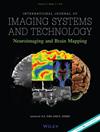Lightweight Local–Global Fusion for Robust Multiclass Classification of Skin Lesions
Abstract
Skin lesion classification is crucial for early diagnosis of skin cancer. However, the task faces challenges such as limited labeled data, data imbalance, and high intra-class variability. In this paper, we propose a lightweight local–global fusion (LGF) model that leverages the advantages of RegNet for local processing and Transformer for global interaction. The LGF model consists of four stages that integrate local and global pathological information using channel attention and residual connections. Furthermore, Polyloss is employed to address the data imbalance. Extensive experiments on the ISIC2018 and ISIC2019 datasets demonstrate that LGF achieves state-of-the-art performance with 93.10% and 90.36% accuracy, respectively, without any data augmentation. The LGF model is relatively lightweight and easier to reproduce, contributing to the field by offering a satisfactory trade-off between model complexity and classification performance. The code for our model will be available at https://github.com/candiceyyy/LGF.

 求助内容:
求助内容: 应助结果提醒方式:
应助结果提醒方式:


